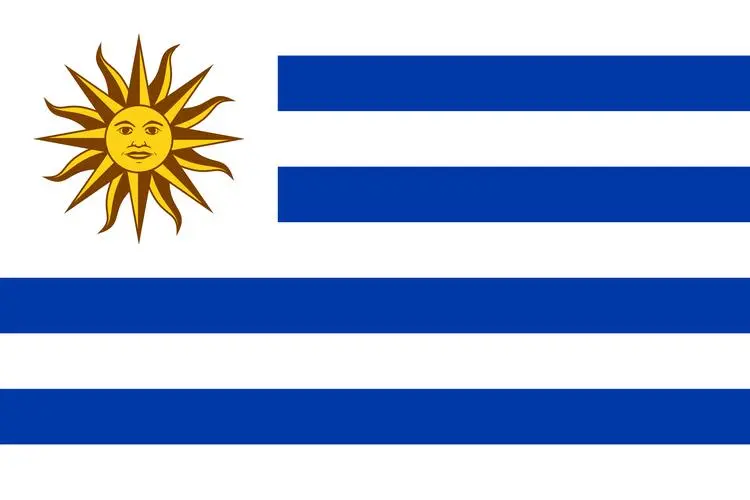Overview of Uruguay

Overview of Uruguay
Geographical location and area
Uruguay is located in the southeastern part of South America, on the east bank of the Uruguay River and the La Plata River. It borders Brazil to the north, Argentina to the west, and the Atlantic Ocean to the southeast. The land area is 176200 square kilometers.
Population and ethnicity
The total population of Uruguay is approximately 3.4442 million (2023), of which 90.8% are white and 4.9% are indigenous. The official language is Spanish, and 66% of residents believe in Catholicism.
Capital and major cities
The capital of Uruguay is Montevideo, with an area of 530 square kilometers and a population of approximately 1.383 million. Other major cities include Salto and Paisandu.
historical background
Uruguay was originally inhabited by Native Americans and was contested by Spain and Portugal after 1680. It became a Spanish colony in 1778 and gained independence from the Brazilian Empire on August 25, 1825. The military government was established in 1973 and returned to the people in 1984.
Political system
Uruguay implements a republican system, with the President serving as the head of state and government for a term of five years. The current implementation is the constitution revised in 1996 and passed by a national referendum, which implements the separation of powers.
Economic situation
The Uruguayan economy is at a moderate level of development in Latin America, with a small economic scale, a single industrial structure, and dependence on exports. The main exports include meat, wool, aquatic products, and rice. In 2022, the Gross Domestic Product (GDP) was 74.182 billion US dollars, with a per capita GDP of 20867 US dollars.
Cultural characteristics
Uruguay's culture blends the influences of Spain and Italy, and the historical district of the immigrant town of Sacramento is a manifestation of this fusion. The Uruguayan Parliament Building is one of the largest buildings in the country, showcasing a rich collection of sculptural art and historical scenes.
The economic profile of Uruguay can be summarized as follows:
Economic scale and industrial structure: Uruguay has a relatively small economic scale and a relatively single industrial structure, mainly relying on exports. Agriculture and animal husbandry are Uruguay's main industries, mainly exporting meat, wool, aquatic products, and rice. The industry is mainly focused on the processing of agricultural and animal husbandry products, while the service industry accounts for a relatively high proportion of the national economy, mainly including finance, tourism, logistics, and transportation.
Economic growth and key economic indicators: In 2023, Uruguay's GDP was 77.241 billion US dollars, a year-on-year increase of 0.37%. The per capita GDP was 22564.53 US dollars, a year-on-year increase of 0.36%. The inflation rate in Uruguay is 8.17%, the unemployment rate is 8.4%, and the total import and export volume is 16.723 billion US dollars.
Main export markets: Uruguay's main export markets include Argentina and Brazil. In the first nine months of 2024, Uruguay's electricity exports amounted to approximately $104 million, with the majority going to Argentina.
Policy environment: Uruguay implements a free market economy policy and actively participates in regional economic integration. The government steadily adjusts the economic structure through macroeconomic regulation and financial supervision. Strictly control fiscal expenditures, promote infrastructure construction, focus on attracting foreign investment, and actively expand exports.
Future outlook: In the first quarter of 2024, Uruguay's economy achieved moderate growth, mainly due to an increase in net exports and private consumption. Despite the decline in industry, favorable weather conditions are expected to drive growth in agriculture and industrial production, and Uruguay's economy is expected to achieve a rapid recovery in 2024.
In summary, while maintaining stability, Uruguay's economy is also actively adjusting its structure and seeking new growth points.

